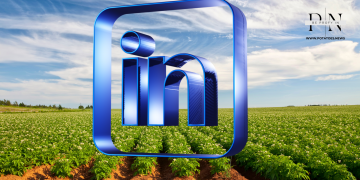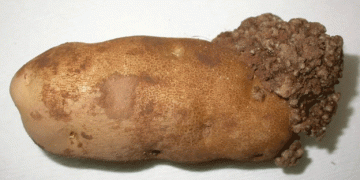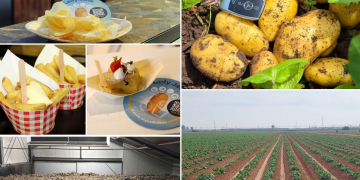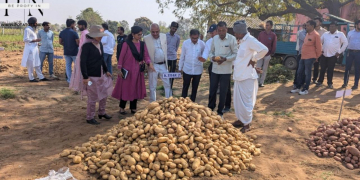The Expanding Potato Processing Industry
The global potato processing industry is poised to reach a market value of $35 billion by the end of 2025, growing at a compound annual growth rate (CAGR) of 4.5% over the past five years. Processed potato products—such as frozen fries, chips, and mashed potatoes—currently account for more than 60% of the global potato market. This growth reflects the ongoing transformation of consumer preferences, driven largely by urbanization and the rise of quick-service restaurants (QSRs).
By 2024, over 57% of the global population lived in urban areas, up from 54% in 2020. The demand for convenient and ready-to-eat meals has surged, with QSR giants like McDonald’s and Yum! Brands heavily reliant on processed potato products for their menus.
Technological Advancements Fuel Efficiency and Sustainability
Technology is reshaping the potato processing landscape. Advanced sorting systems now increase product yield by up to 15%, while AI-powered quality control systems have reduced product defects by 20%. Additionally, processors are adopting energy-efficient machinery, cutting operating costs and carbon emissions. Water conservation strategies, which have lowered water usage by nearly 30%, highlight the industry’s growing commitment to sustainability.
Challenges: Climate Change and Supply Chain Disruptions
The industry’s growth faces significant challenges, including the impact of climate change on global potato yields. In 2024, global yields were estimated at 380 million metric tons, with extreme weather events causing a 10% reduction in key regions such as North America and Europe. In response, countries like China are investing heavily in heat-tolerant potato varieties, allocating over $250 million to related research in 2024 alone.
Supply chain issues remain a pressing concern. Rising transportation costs—up 18% year-over-year in 2024—have hindered the distribution of both raw and processed potatoes. European exporters have seen shipping costs for frozen fries increase by €40 per metric ton, squeezing profit margins.
Shifting Consumer Preferences
Consumer preferences are also evolving. Fresh potato consumption per capita has dropped nearly 15% over the past decade, while demand for processed products has surged. Between 2020 and 2024, Asia’s frozen potato product consumption grew by 8% annually, driven by a growing middle class and adoption of Western diets. However, health-conscious consumers have pushed for alternatives, leading to a rise in low-fat chips and fries, which now make up 12% of product offerings—up from 8% in 2020.
Emerging Markets and Regional Growth
Emerging markets in Latin America, Africa, and Asia are expected to account for over 40% of the industry’s revenue growth by 2025. Improved cold storage infrastructure has played a critical role in supporting this growth. For instance, India has increased its cold storage capacity by 20% since 2020, enabling the expansion of its potato processing sector.
The potato processing sector is on a robust growth trajectory, driven by technological innovation and shifting market dynamics. However, the industry must address challenges such as climate change, supply chain disruptions, and regulatory scrutiny to ensure long-term resilience. Emerging markets and continued investment in sustainable practices offer promising opportunities for sustained growth.






